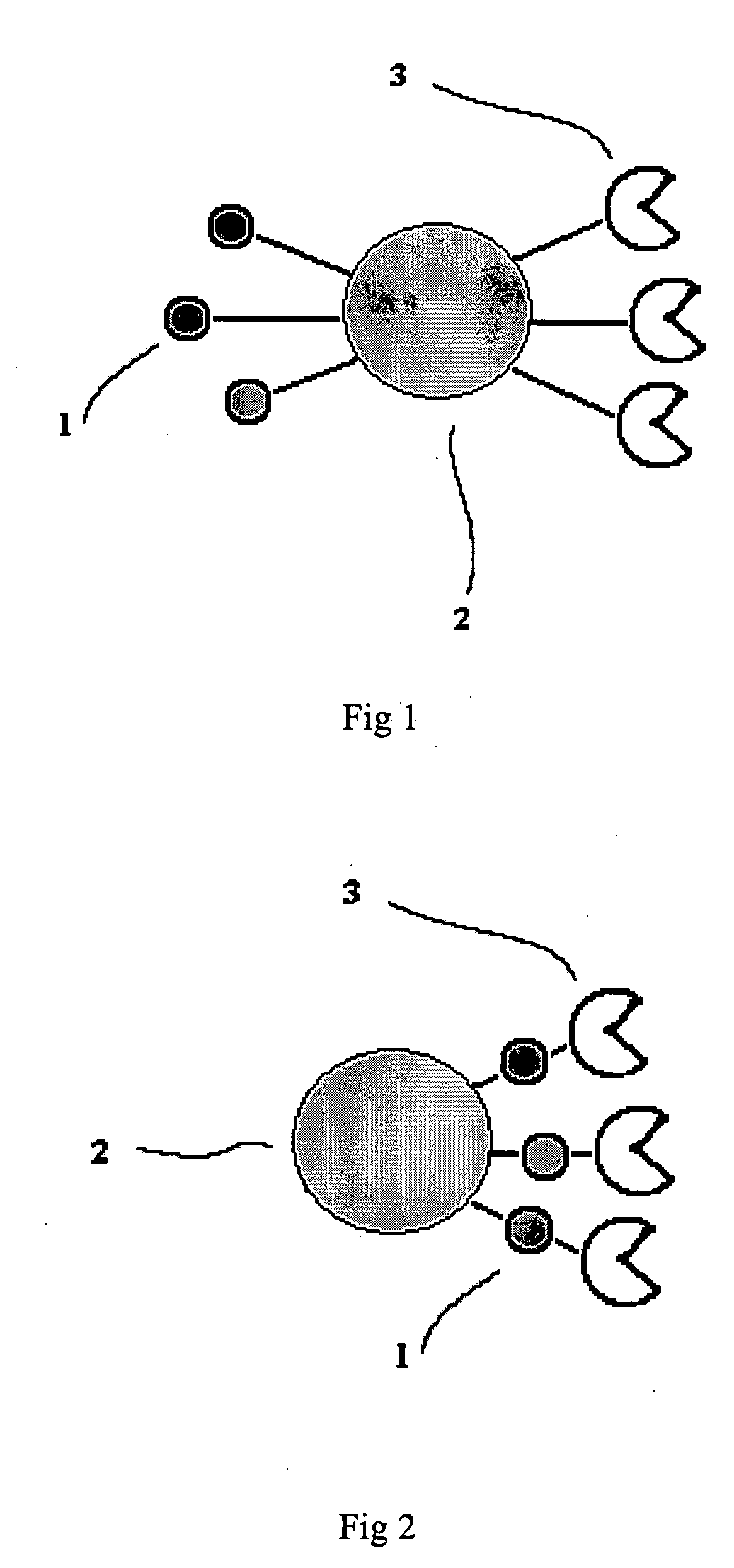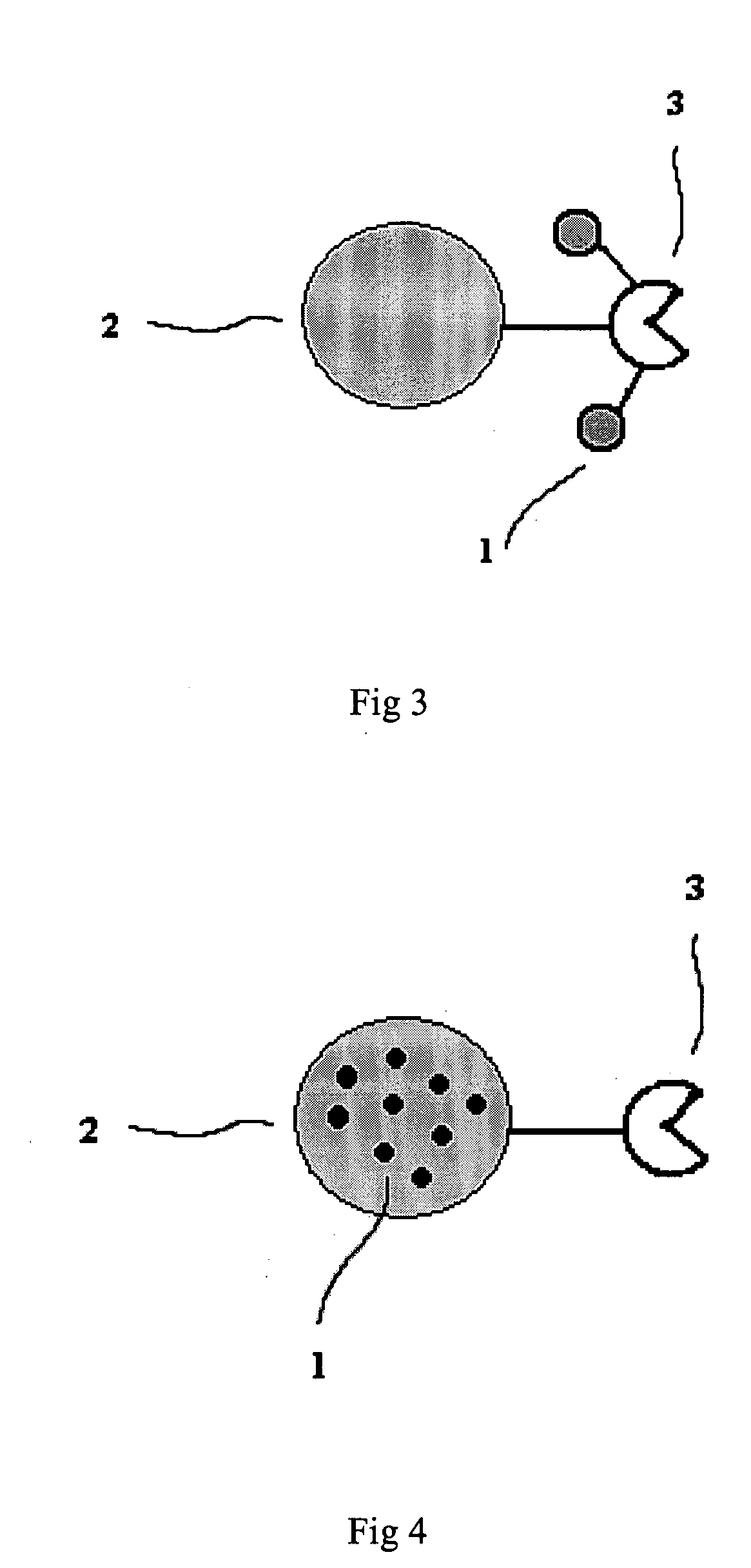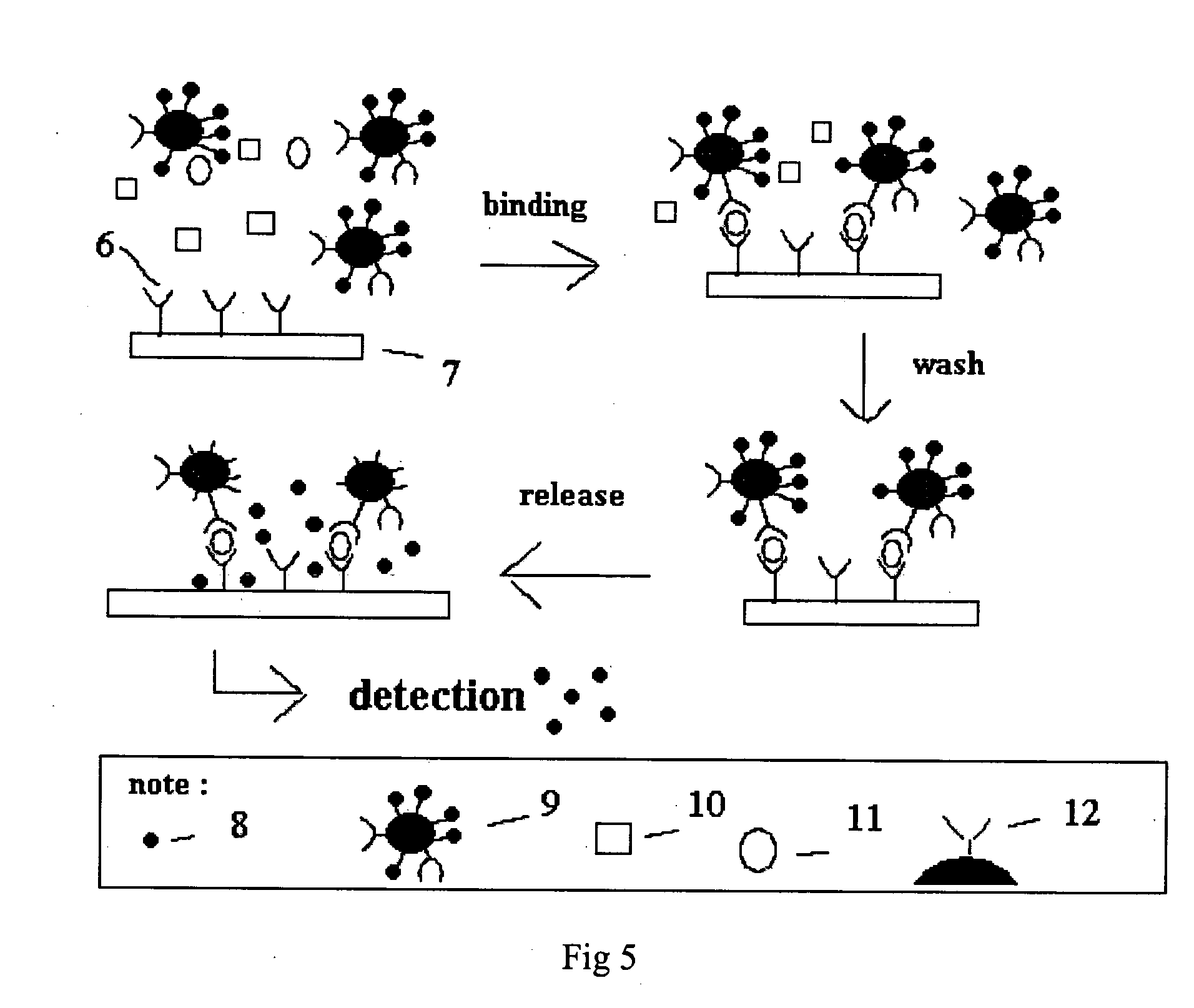Method for multiplexed analyte detection
a multiplexed analyte and detection method technology, applied in the field of multiplexed analyte detection, can solve the problems of reducing the sensitivity of elisa tests, requiring a relatively long time to achieve maximum sensitivity, and reducing so as to achieve the effect of increasing the sensitivity of analyte detection
- Summary
- Abstract
- Description
- Claims
- Application Information
AI Technical Summary
Benefits of technology
Problems solved by technology
Method used
Image
Examples
example 1
Signal Amplification with Release of Signaling Moiety
[0075]FIG. 5 illustrate one example in which reporter system (e.g. SAS) is used for analyte detection. The assay is aimed to detect a certain antigen 11 in the sample containing other molecules 10, i.e., the non-target molecules. The micro well plate well surface 7 is coated with antibody 6 specific for the antigen 11 using a sandwich format method known in art. The microsphere-based SAS 9 contains another antibody 12 specific for an epitope distinct from that for antibody 6 on the microwell plate wells. In addition, SAS 9 also contains chemiluminescent molecules 8 as the signaling moieties. In the presence of antigen 11 in the sample and under appropriate binding conditions (e.g., appropriate buffer, temperature etc.), some of the SAS 9 are immobilized on the surface of the microwell plate well 7 through a sandwich binding in which the antigen interacts with both the SAS 9 and microwell plate. After washing to remove the unbound...
example 2
Magnetic Particle Based Signal Amplification Using Reporter System for Detecting HIV RNA
[0078]FIG. 6 illustrates yet another example for using SAS in an assay. In this case, magnetic particles 18 are used as the solid phase substrate. The chemiluminescent molecules 15 are encapsulated in the microparticles 16. Magnetic particles 18 and SAS 17 are coated with distinct analyte binding moieties, e.g., polynucleotide probes 13 and 14 that hybridize with different regions of HIV-1 viral RNA 20 for the detection of this virus. The magnetic particles are preferably approximately 3 micrometer in diameter and are coated with functional groups such as carboxyl group, which facilitates the labeling of analyte binding moieties such as oligonucleotide probe 13. An example for suitable magnetic particles is Dynabeads M-270 coated with carboxylic acid (available from Dynal Biotech, Oslo, Norway). Dynal Biotech provides a protocol for labeling of oligonucleotides to the magnetic particles.
[0079] ...
example 3
Detection of Bacteria
[0082] This example shows how the SAS technology can be used for sensitive detection of a particular species or class of species of bacteria using a nucleic acid target, e.g., tRNA, ribosomal RNA. Similar to the HIV-1 assay, there needs to be at least one pair of probes. Here in this example, the probes are relatively long oligonucleotides that contain two hybridization domains, one of which is specific for the target nucleic acids whereas the other domain is specific for the oligonucleotides conjugated on magnetic particles for one of the probes or for the oligonucleotides conjugated on SAS units for another probe. In this example, we use Probes A and B, which contain hybridization domains for magnetic particles and SAS, respectively. The magnetic particles are preferably approximately 3 micrometer in diameter and are coated with functional groups such as carboxyl group, which facilitates the labeling of analyte binding moieties such as oligonucleotide probe. ...
PUM
| Property | Measurement | Unit |
|---|---|---|
| Color | aaaaa | aaaaa |
| Size | aaaaa | aaaaa |
| Molecular weight | aaaaa | aaaaa |
Abstract
Description
Claims
Application Information
 Login to View More
Login to View More - Generate Ideas
- Intellectual Property
- Life Sciences
- Materials
- Tech Scout
- Unparalleled Data Quality
- Higher Quality Content
- 60% Fewer Hallucinations
Browse by: Latest US Patents, China's latest patents, Technical Efficacy Thesaurus, Application Domain, Technology Topic, Popular Technical Reports.
© 2025 PatSnap. All rights reserved.Legal|Privacy policy|Modern Slavery Act Transparency Statement|Sitemap|About US| Contact US: help@patsnap.com



